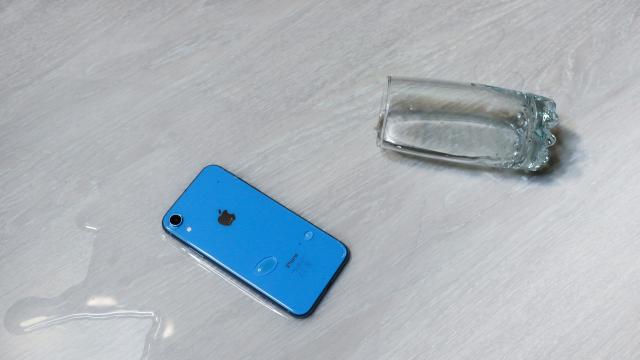If Star Wars has taught us anything, it’s that “resistance” does not mean “invincible.” Bad things happen even when you have the most noble intentions, which speaks to how Apple — and most other smartphone manufacturers — rate their devices’ protection against liquids.
In Apple’s case, the company recently received a $US12 ($16) million fine in Italy regarding the marketing of its iPhones’ water resistance. Specifically, Apple stated that a number of its iPhones were water-resistant “to a maximum depth varying between four meters and one metre depending on the model, for up to 30 minutes,” as noted by 9to5Mac.
That seems normal, right? However, Italian regulators took issue with the fact that Apple didn’t indicate exactly how it came to its conclusions. Namely, Apple’s tests to determine safe “water resistance” figures for its iPhones took place in a lab, not a real-world setting, and the company used “pure” water that wasn’t moving for its tests.
This matters, because that’s not likely the conditions you’ll ever encounter when submerging your phone. Water moves. Water can also contain dirt, gunk, sentiment, other liquids, and who knows what else. When you immerse your phone into water, it might come into contact with other things: the floor that it lands on, whatever else you’re keeping in your swim trunk pockets, or an angry fish.
In short, Apple’s tests aren’t exactly indicative of real-world settings. They’re just designed to get a semi-artificial number about water resistance — which, to note, is not the same as waterproof — and, to Italy, Apple wasn’t clear enough about this fact.
This number, an IP68 rating for the latest iPhone 12s, means that your device has “Ingress Protection” rated at a six for solids and an eight for liquids, or:
- Solids: “Dust Tight. No ingress of dust; complete protection against contact.”
- Liquids: “Immersion beyond 1m. The equipment is suitable for continuous immersion in water under conditions which shall be specified by the manufacturer. Normally, this will mean that the equipment is hermetically sealed. However, with certain types of equipment, it can mean that water can enter but only in such a manner that it produces no harmful effects.”
What this means in the real world is more a mix of environmental conditions and luck. I’ve seen iPhone 12s nail the submersion+time tests in salt water without a problem at first, only to show issues later when it was time to recharge their batteries. I’ve also seen iPhone 12s get unboxed in a pool without any issues whatsoever. And we’ve all seen plenty of YouTube videos of influencers submitting their brand-new iPhones to all kinds of liquid torture:
When water wrecks your warranty more than your iPhone
If your water-resistant iPhone gets wet, odds are good that it’ll be just fine. And even if you accidentally get it a bit more wet than a misting or a splashing — spilling a full cup of water on your iPhone or, worse, accidentally bumping it into the shallow end of a pool — you’ll probably be fine. Or, at least, you’ll be a lot more fine than the time my iPhone 4 took an unanticipated dip. It was not water resistant at all, let me tell you.
Would I go seeking water with my iPhone? No. Would I try to film a lovely video of my next big snorkelling trip with my iPhone? Not without a waterproof case. Should you start saving up money for an iPhone repair if you drop your smartphone into something? Absolutely. For while your iPhone might be water-resistant, that specification doesn’t offer you any protection when it comes to future warranty service.
Should you drop your phone into water, and it survives for some time only to encounter some kind of an issue later — even one that might not have been triggered by its splash — Apple might balk at repairing it under warranty if the device’s water indicator has been activated.
This is actually the second half of the Italian regulators’ problems with Apple’s marketing — specifically, that Apple indicated its phones were water-resistant without explicitly mentioning that liquid ingress voids the devices’ warranty. This could lead iPhone 12 owners to incorrectly assume that Apple will still fix their device if liquid damages it, since that must be a manufacturing problem if liquid is penetrating the smartphone’s magical resistance.
Not so. If that little indicator was touched by liquid in any way, even if everything else is on the up-and-up, your warranty repair with Apple just got a lot more difficult. Resistance might keep your phone alive when it gets wet, but that doesn’t mean you should let your guard down around liquids. The only thing you should be resisting is the urge to give your iPhone a bath.

Leave a Reply
You must be logged in to post a comment.